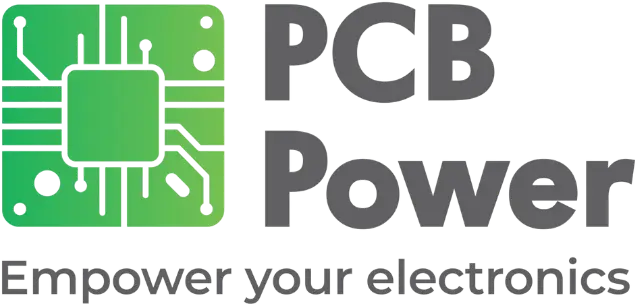
Application and Use of PCBs
Pick any electronic equipment, and in most cases, there will be one or more printed circuit boards or PCBs inside. A printed circuit board is a flat thin non-metallic sheet with small electronic components mounted on it. Apart from holding the components securely and safely, the PCB circuit design allows conductors that interconnect the components electrically. Manufacturers offer printed circuit board services for various popular electronic equipment include:
- Computer keyboards
- Computer motherboards
- Electronic multimeters
- TV remotes
- Kitchen appliances
- Mobile phones
Today, almost every industry uses printed circuit boards as major functional centers of their modern equipment. PCBs are available in a large variety of materials and their configurations are almost infinite. With such flexibility, these versatile components can function in numerous capacities and applications. We explore only a handful of these uses here:
- Computer keyboards
- Computer motherboards
- Electronic multimeters
- TV remotes
- Kitchen appliances
- Mobile phones
Lighting Applications
Metal clad printed circuit boards offer a versatile base for numerous high-output LED applications. A variety of industries have changed over to use LED lighting solutions mainly for their low power consumption, higher efficiency, and amazing light output. LEDs integrated into a PCB offers huge versatility, with the PCB expanding the use of LEDs for lighting solutions, especially for displays and indicators. Major industries using lighting PCB applications include:
Automotive Lighting Displays
The automotive industry is a regular user of LED displays on PCBs. They use these LED displays on the dashboard as indicators, in headlights, brake lights, and in advanced panel displays. Mounting LED lights on printed circuit boards brings down the manufacturing cost while improving the durability of the lighting system. It improves customer satisfaction, and increases the longevity and value of the vehicle.
Telecommunications Lighting Indicators
The telecommunications industry frequently makes use of LED indicators and displays on PCBs. This industry favors lightweight and durable PCB manufacturing and assembly, primarily as the component density in their equipment is very high. They commonly use metal clad printed circuit boards because of their improved capacity for heat transfer over the regular FR4 type boards.
Medical Lighting Tools
The medical industry uses lighting tools in many applications, especially in emergency and surgical applications, as powerful and distributed lighting helps to Improve the visibility of the physician. The industry prefers the use of LEDs for these applications, because they offer lower heat generation and higher amounts of light. Most LED PCBs use metal clad boards, as these can offer better heat transfer from the LEDs compared to other printed circuit board fabrication types. Use of these PCBs guarantees that the medical equipment will have a long life and the industry can use it repeatedly in a variety of settings.
Residential, Commercial, and Community Lighting
LEDs are now a very common feature in almost all residential, commercial, and community lighting. PCB production with LEDs is a popular lighting arrangement within residences, in commercial establishments, and community applications like street lighting. LEDs mounted on metal clad PCBs is a simple arrangement for all lighting applications as LEDs offer low heat generation, low power consumption, and good illumination. Commercial establishments such as stores can customize their displays for improved visibility at their storefronts.
Aerospace Applications
Aerospace applications require very high quality of printed circuit boards and services along with high precision and durability. Devices used by the aerospace industry must face tremendous amounts of turbulence, vibration, and temperature variations. Regular rigid circuit board manufacturing cannot endure long periods of such stress. Therefore, the aerospace industry prefers to use flexible, light and small PCBs that are resistant to vibration damage.
Aerospace applications use critical components in their design as these are essential to the safety of the vehicle and its crew. To allow them to function perfectly, aerospace circuit board manufacturing must follow precise construction methods to allow them to function optimally while avoiding technical issues. The aerospace industry uses PCBs in several areas including:
Testing Equipment
Before engineers clear an aircraft for flight, they must test the vehicle thoroughly. Apart from such pre-flight maneuvers, they also require testing equipment while development. The aviation industry requires various types of testing equipment for collecting data for vibration, structural, and flight testing. All testing equipment requires high-quality printed circuit board services as their core for development of effective, efficient, and safe aircraft.
Monitoring Equipment
While in flight, monitoring the aircraft functionality both onboard and from the ground is essential to its proper functioning and survival. These monitoring equipment depend on reliable and rugged printed circuit boards to provide the crew with reliable data from various sensors in the engines, cockpits, and other important parts of the aircraft.
Communication Equipment
During flight, it is essential that the crew in the aircraft is always in communication with the ground control. Such communication is essential in knowing the position and status of the aircraft at any point in time. The aerospace industry uses communication equipment that rely on high-quality printed circuit board services to provide them this essential link.
Industrial Applications
Industrial applications of PCBs are almost endless. They use printed circuit board services in almost all high-power, medium power, and low-power applications for control systems, lighting systems, monitoring, testing, and others. PCB fabrication services for industrial applications often must ensure the board can survive in several types of harsh environmental conditions of rough handling, wide temperature fluctuations, machine vibrations, and harsh chemicals. In general, the industry uses PCBs for:
Functional Equipment
These are mostly for pressing, drilling, grinding, and other types of equipment with PCB-controlled electronics for various types of heavy-duty work.
Measuring and Control Equipment
The industrial manufacturing process requires several types of equipment for measuring and controlling parameters such as pressure, temperature, humidity, and other variables. These equipment are mostly dependent on electronic controls that use rugged printed circuit boards.
Power Equipment
Industrial equipment requires power to operate. Power equipment supply various types of power conversion from DC to AC, AC to DC, AC to AC, DC to DC, and solar to AC or DC. Circuit board manufacturing must supply high-quality, reliable, and rugged PCBs for control of the equipment and the power they deliver.
Medical Applications
Medical applications are a vast field that requires PCBs for almost every equipment they use such as for monitoring, diagnostic, and treatment devices. Printed circuit board services for medical equipment require to be of much higher standards than those for other applications, as the health of human beings depend on these equipment. PCB production for medical equipment must be highly reliable and offer repeatable performance. PCBs for the medical industry are useful in applications including:
Instrumentation
Mostly for medical research, the industry uses scientific instrumentation for studying diseases and testing patient outcomes. They require printed circuit board services for photometers, electron microscopes, gyrators, centrifuges, and many more.
Internal Devices
Pacemakers and similar internal medical devices require highly reliable PCBs to maintain the patient’s health.
Scanning Devices
X-rays, CT scanners, and ultrasonic scanners all depend on PCBs for providing the electronic control of these versatile instruments.
Monitors
Healthcare and personal monitoring of patients for their blood glucose, pressure, heart rate, and other vital parameters that keep them healthy, rely on PCBs and electronics.
Other Applications
There are other major areas like automotive and consumer electronics applications that are also highly dependent on high-quality, rugged, and reliable printed circuit boards and associated electronics to operate reliably and safely.
Conclusion
Printed circuit boards have pervaded almost all aspects of human life going far beyond those listed here. For some of the most vital aspects of our lives like communications and entertainment, we are totally dependent on our mobile phones. Again, high-quality printed circuit board fabrication forms the heart of such wondrous innovations.



